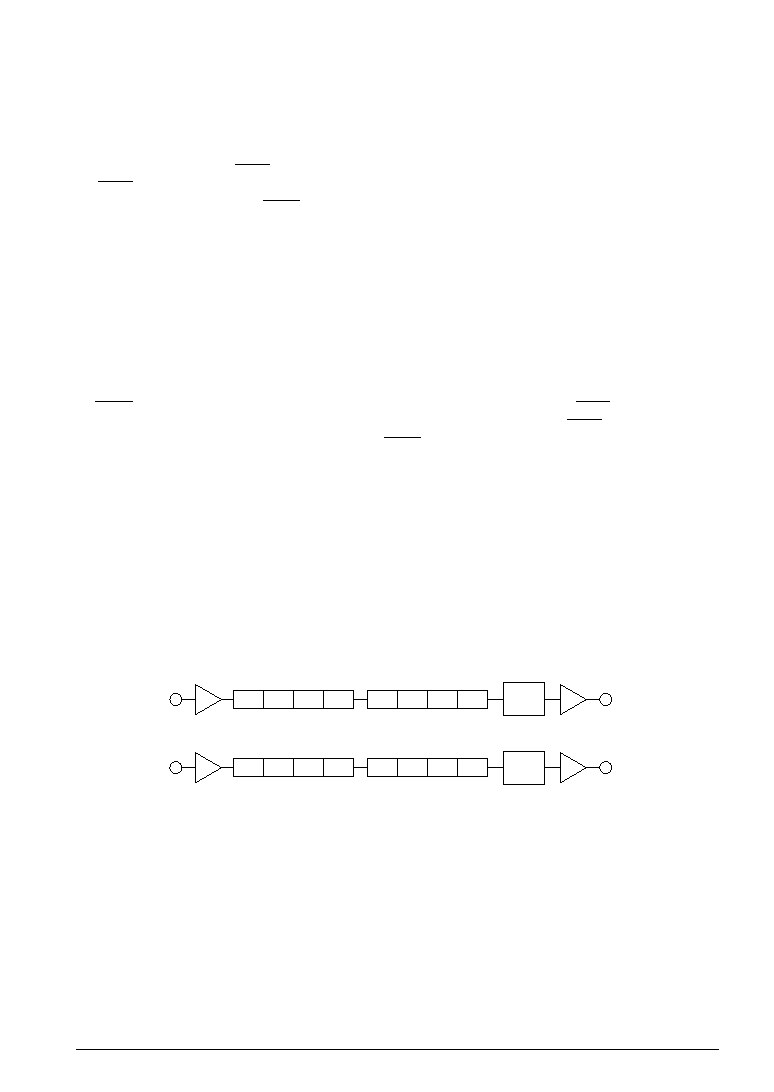- 您現(xiàn)在的位置:買賣IC網(wǎng) > PDF目錄98068 > S1C6S460D 4-BIT, MROM, 2 MHz, MICROCONTROLLER, UUC124 PDF資料下載
參數(shù)資料
| 型號(hào): | S1C6S460D |
| 元件分類: | 微控制器/微處理器 |
| 英文描述: | 4-BIT, MROM, 2 MHz, MICROCONTROLLER, UUC124 |
| 封裝: | 4.69 X 4.68 MM, DIE-124 |
| 文件頁數(shù): | 77/107頁 |
| 文件大小: | 788K |
| 代理商: | S1C6S460D |
第1頁第2頁第3頁第4頁第5頁第6頁第7頁第8頁第9頁第10頁第11頁第12頁第13頁第14頁第15頁第16頁第17頁第18頁第19頁第20頁第21頁第22頁第23頁第24頁第25頁第26頁第27頁第28頁第29頁第30頁第31頁第32頁第33頁第34頁第35頁第36頁第37頁第38頁第39頁第40頁第41頁第42頁第43頁第44頁第45頁第46頁第47頁第48頁第49頁第50頁第51頁第52頁第53頁第54頁第55頁第56頁第57頁第58頁第59頁第60頁第61頁第62頁第63頁第64頁第65頁第66頁第67頁第68頁第69頁第70頁第71頁第72頁第73頁第74頁第75頁第76頁當(dāng)前第77頁第78頁第79頁第80頁第81頁第82頁第83頁第84頁第85頁第86頁第87頁第88頁第89頁第90頁第91頁第92頁第93頁第94頁第95頁第96頁第97頁第98頁第99頁第100頁第101頁第102頁第103頁第104頁第105頁第106頁第107頁

S1C6S460 TECHNICAL MANUAL
EPSON
63
CHAPTER 9: SERIAL INTERFACE
(1) Serial data output procedure
The S1C6S460 serial interface is capable of outputting parallel data as serial data, in units of 8 bits.
By setting the parallel data to data registers SD0–SD3 and SD4–SD7 individually and writing "1" to
SCTRG (F7AH [D3]), it synchronizes with the synchronous clock and serial data is output at the
SOUT terminal. The synchronous clock used here is as follows: in the master mode, internal clock
which is output to the SCLK terminal while in the slave mode, external clock which is input from the
SCLK terminal. The serial output of the SOUT terminal changes with the falling edge of the clock that
is input or output from the SCLK terminal.
When the output of the 8 bits data from SD0 to SD7 is completed, the interrupt factor flag ISIO is set
to "1" and interrupt is generated. Moreover, the interrupt can be masked by the interrupt mask
register EISIO. Note, however, that regardless of the setting of the interrupt mask register, the inter-
rupt factor flag is set to "1" after output of the 8 bits data.
(2) Serial data input procedure
The S1C6S460 serial interface is capable of inputting serial data as parallel data, in units of 8 bits.
By writing "1" to SCTRG, the serial data is input from the SIN terminal, synchronizes with the syn-
chronous clock, and is sequentially read in the 8 bits shift register. As in the above item (1), the
synchronous clock used here is as follows: in the master mode, internal clock which is output to the
SCLK terminal while in the slave mode, external clock which is input from the SCLK terminal.
The serial data to the built-in shift register is read with the falling edge of the SCLK signal when SEN
bit is "1" and is read with the rising edge of the SCLK signal when SEN bit is "0". Moreover, the shift
register is sequentially shifted as the data is fetched.
When the input of the 8 bits data from SD0 to SD7 is completed, the interrupt factor flag ISIO is set to
"1" and interrupt is generated. Moreover, the interrupt can be masked by the interrupt mask register
EISIO. Note, however, that regardless of the setting of the interrupt mask register, the interrupt factor
flag is set to "1" after input of the 8 bits data.
Also, the data input in the shift register can be read from data registers SD0–SD7 by software.
(3) Serial data input/output permutation
The S1C6S460 allow the input/output permutation of serial data to be selected by mask option as to
either LSB first or MSB first. The block diagram showing input/output permutation in case of LSB
first and MSB first is provided in Figure 9.4.1.
SD7 SD6 SD5 SD4
Address [F31H]
In case of LSB first
SIN
SOUT
SD3 SD2 SD1 SD0
Address [F30H]
Output
latch
SD0 SD1 SD2 SD3
Address [F30H]
In case of MSB first
SIN
SOUT
SD4 SD5 SD6 SD7
Address [F31H]
Output
latch
Fig. 9.4.1 Serial data input/output permutation
相關(guān)PDF資料 |
PDF描述 |
|---|---|
| S1C88104P0A0100 | 8-BIT, MROM, 8.2 MHz, MICROCONTROLLER, PBGA240 |
| S1C88317D0A0100 | MICROCONTROLLER, UUC170 |
| S1C88308D0A0100 | MICROCONTROLLER, UUC170 |
| S1C88308F0A0100 | MICROCONTROLLER, PQFP160 |
| S1C88348F | 8-BIT, MROM, 8.2 MHz, MICROCONTROLLER, PQFP16 |
相關(guān)代理商/技術(shù)參數(shù) |
參數(shù)描述 |
|---|---|
| S1C7309X | 制造商:SAMSUNG 制造商全稱:Samsung semiconductor 功能描述:B/W CCD PROCESSOR |
| S1C7309X01 | 制造商:SAMSUNG 制造商全稱:Samsung semiconductor 功能描述:B/W CCD PROCESSOR |
| S1C88349 | 制造商:EPSON 制造商全稱:EPSON 功能描述:8-bit Single Chip Microcomputer |
| S1C88649 | 制造商:EPSON 制造商全稱:EPSON 功能描述:8-bit Single Chip Microcomputer |
| S1C88650 | 制造商:EPSON 制造商全稱:EPSON 功能描述:8-bit Single Chip Microcomputer |
發(fā)布緊急采購(gòu),3分鐘左右您將得到回復(fù)。